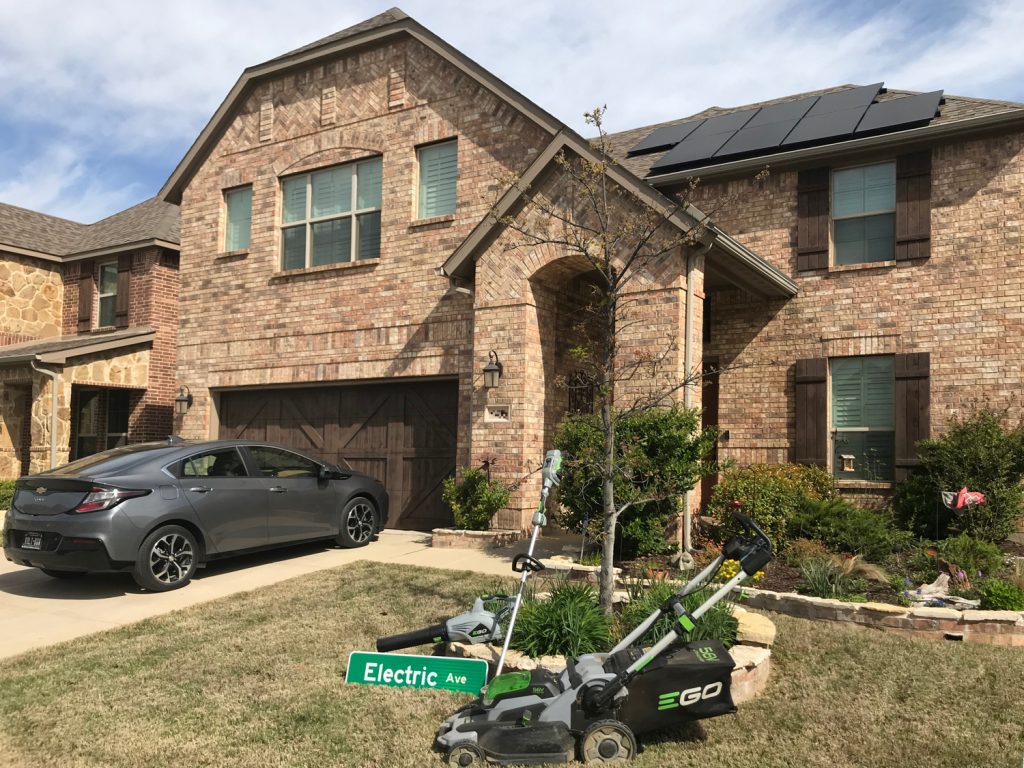Yes, it looks the same. You walk up to a machine, remove a flexible dispenser and insert said dispenser into your car’s fuel storage system. It’s obvious why EV charging would be considered the equivalent of gasoline refueling, but that’s just not the case. The similarity has been used to keep buyers from getting a plug-in vehicle by creating FUD (fear, uncertainty and doubt) about the relatively small number of charging locations, versus gasoline station abundance.
If this argument was being had a century ago, the sellers of hay (to fuel your horse) would be saying that, unless gasoline was just lying in fields, it would never be as convenient as hay for feeding your horse… You have to locate it, drill for it, refine it and then transport it to a “gas station,” for consumers to access it. With hay, you just throw out some seed and your fuel springs up, right out of the ground!
So why get an automobile?!?!?
When you think about it, EV charging is more like feeding a horse. It takes longer than refueling a vehicle with gasoline. It can be done without human intervention. It can also be done while you sleep. That’s not a bad thing. That’s the beauty of the EV lifestyle!
What brought this subject up, was an article posted on UPI about “obstacles” arising, due to increased EV adoption in the U.S. I see articles like this pop up all the time. I see surveys that show battery range and lack of charging infrastructure as major impediments to EV adoption. Today, neither of these things are true, but I’ll focus on the number of charging stations today. We’ll discuss battery range another time.
Articles, like the one published by UPI, are one of two things:
- an effort, by those who oppose EV adoption, to confuse consumers and postpone EV adoption as long as possible, or
- poor journalism/polling practices by someone who has never owned an EV.

The fact of the matter is, we need to have a better discussion of EV lifestyle instead of dry EV information. Those mildly interested in an EV, will not dredge through conflicting articles to get a better understanding of something about which they may have just a passing curiosity. Those seriously considering an EV, will read tons of material, to decide if they’re ready to make the leap, but due to their inexperience, will equate EV driving with gasoline-powered driving. Other than both being a mode of transportation, the similarities end pretty quickly.
I have been asked, by a person considering a plug-in vehicle, “Isn’t it a pain to have to plug in your car every night, when you get home?”
No! It’s exactly the opposite!
I much prefer taking ten seconds to get out of my car, grab the charger plug, and plug my car in daily, to having to locate a gas station, stand in the heat, cold or rain, for five minutes, while avoiding people selling items, asking for money, possibly have my credit card information stolen and (the final insult) having to go up to the cashier to get my receipt, when the printer has run out of paper. (That really gripes me!)
We do not need electric vehicle chargers on every street corner. It’s a new paradigm and we need to shift the conversation toward the convenience of charging at home or work. One of my friends (and a client) said it best, “If you had to return to the Apple Store every time your iPhone needed to be charged, would you have bought it?” No! You love being able to recharge your smartphone at home. In fact, that was an absolute necessity, in order for you to get a smartphone, wasn’t it?
Yes, there will be those who need to drive further than their EV can on a single charge. Typically, those drivers will be driving from one city to another. The chargers needed for this are DC fast chargers, otherwise known as Level 3 chargers and the place we should be putting those up are highways between cities (think Tesla “Destination Chargers“).
As EV adoption spreads, we will need chargers, in the cities, to facilitate charging for those who live in multi-family dwellings and have no garage, in which to charge, once they’re home. They will also be used by those who need a little extra charge in order to get home, where they can charge at leisure. Those living in apartments will treat their EV more like a gasoline-powered vehicle, in that they will charge every 5 to 7 days, instead of every night. I have clients, driving Bolt EVs, doing exactly this today. In the long run though, building codes should be modified to require electric outlets for each parking spot in multi-family residential developments, to facilitate charging of EVs.
The ability to refuel at home has not been practical with gasoline vehicles. None of us wanted to have gasoline delivered in bulk to tanks beneath our homes. None of us wanted to deal with the smell or fire hazards gasoline posed. It just didn’t make sense, when we could drive to a corner gas station and fill up in a few minutes.
In the EV world, depending on where one lives, we have the ability to shop for a lower fuel cost (electricity provider), lock that price in for a time, buy that fuel at off-peak times to get an even lower price (if not free), create the fuel ourselves (via solar panels or wind turbines) and safely store that fuel (in batteries), until we’re ready to load it into our EV. We can even take that stored fuel and use it to run our homes, if there is a power outage!
None of those things could be done by a middle-income family, when our fuel was gasoline. Now, I do some of these things every day.

